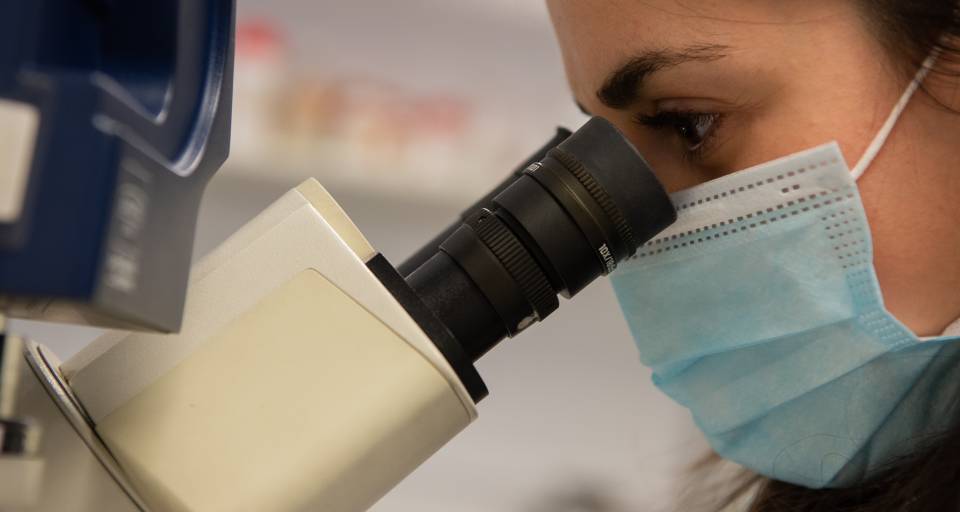Cervical cancer is the second most common type of cancer among young women, and it is caused by the human papillomavirus (HPV) in almost 100% of cases. The most effective tools available to prevent cervical cancer are: pap smear, a test used for early detection of possible precursor lesions of cervical cancer; the HPV test which is proposed in the new guidelines as a primary screening test; and vaccination.
The WHO recently set itself the challenge of eliminating cervical cancer as a public health problem. ‘Elimination’ is understood to be an incidence of less than 4 cases of this disease per 100,000. To achieve this goal, the WHO has established that by 2030 all countries should have reached three milestones: vaccinating 90% of adolescent girls, screening 70% of women aged 35-45 years, and treating 90% of positive screening cases. Screening is when a disease is detected in individuals without any signs or symptoms.
To start working on reaching this target, the International Agency for Research on Cancer (IARC) invited a group of experts to critically review all existing scientific evidence on the effectiveness of screening tests in reducing incidence and mortality rates for cervical cancer. This handbook spurred the update of the WHO clinical guidelines to bring them in line with the objective of eliminating this disease, which represents the second most common cancer in women of reproductive age, and the second most frequent cause of cancer deaths in this population group. Screening strategies used worldwide were reviewed: pap smear, HPV testing, visual inspection with acetic acid (VIA) and colposcopy, and Romanovsky-Giemsa cytology staining.
Cervical cytology or pap smear is a method that involves scraping the cervical area to obtain cells, which are then stained with a dye and studied under a microscope. Cytology is the basis of classical screening programmes, and has reduced cervical cancer incidence and mortality. However, cytology has suboptimal sensitivity, as some women have lesions that are not detected by cytology.
Unlike cytology, the Human Papillomavirus (HPV) test is very sensitive. Published studies have shown that it decreases cervical cancer incidence and mortality rates. However, the majority of young women who have a positive HPV test do not develop a cancerous lesion. The HPV test can detect the presence of the virus and whether or not it is active. It can also detect viral activity, which reports whether the virus is active and replicating. HPV testing can be done using the same sample as the pap smear, or by self-sampling.
Another screening test, mainly used in low-income countries, is visual inspection with acetic acid (VIA). This procedure is used to view the cervix after applying acetic acid, and causes changes in colouration in areas where there is a pre-malignant lesion. Although VIA is very sensitive and specific, it is inferior to other screening tests. However, it has the advantage of allowing treatment immediately after assessment (screen and treat). This avoids loss to follow-up (many women are unable to return to the clinic) and enables early treatment.
In countries with more economic resources, women with severe or persistent screening abnormalities are referred for colposcopy. This is a tool for viewing the cervix at high magnification after applying acetic acid, and gives guidance on which area of the cervix needs to be biopsied if a lesion is observed. Either follow-up or treatment is indicated, according to the diagnosis.
Finally, cytology based on Romanovsky-Giemsa staining is a technique practised in some states of the former Soviet Union. It costs less than pap smears, but has low sensitivity and specificity, and there is little evidence of its effectiveness in reducing incidence and mortality.
The IARC highlights which tests are performed and how effective they are in reducing the incidence of cervical cancer, and the risk of death associated with this disease. This consensus has been compiled by the IARC in a handbook to be published next year, and has already been summarised in a recent publication in New England. Dr Marta del Pino (Clinical Institute of Gynaecology, Obstetrics and Neonatology at Hospital Clínic of Barcelona), and Dr Silvia de Sanjosé (ISGlobal), were members of the IARC expert groups and are co-authors.




